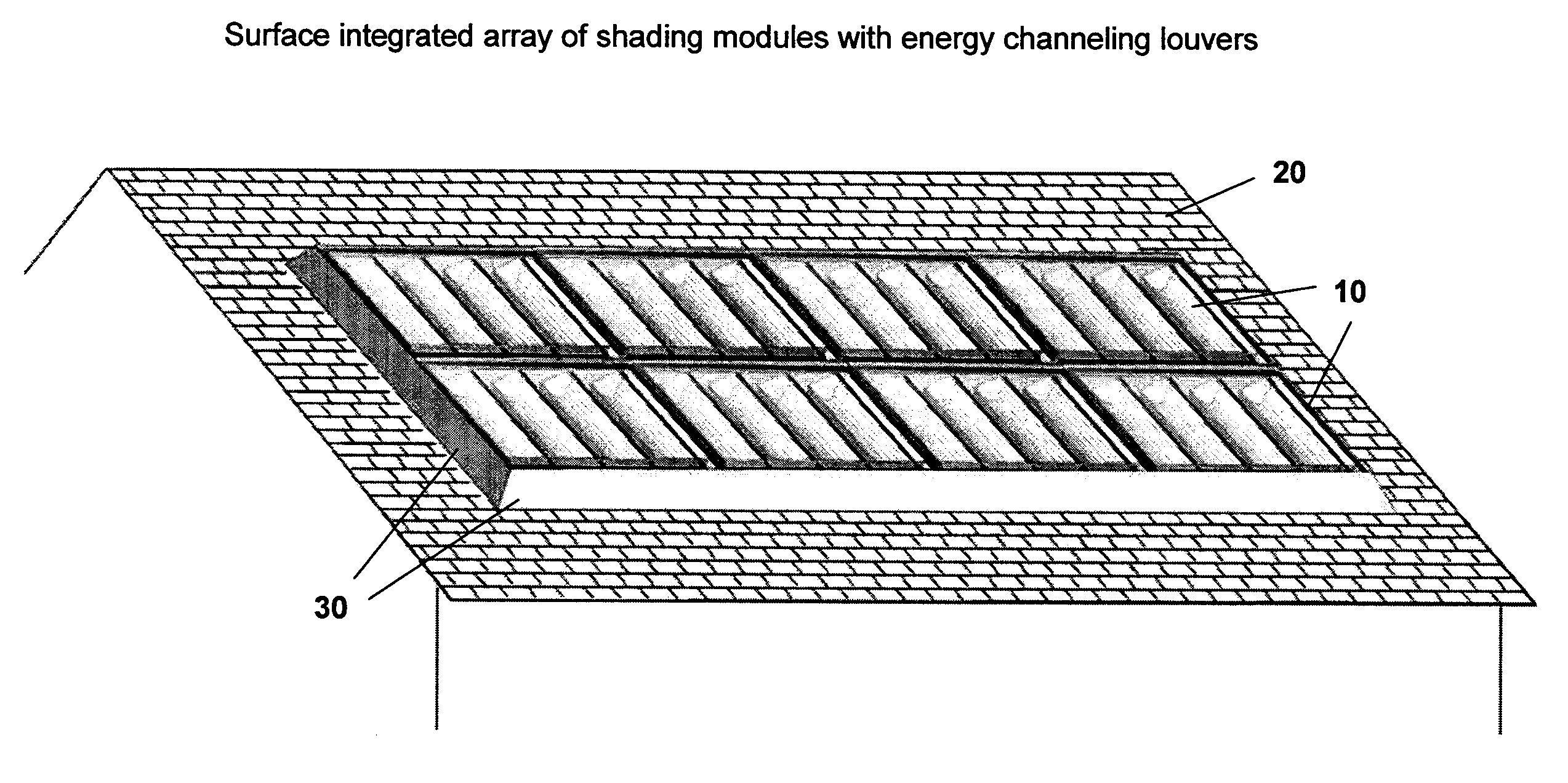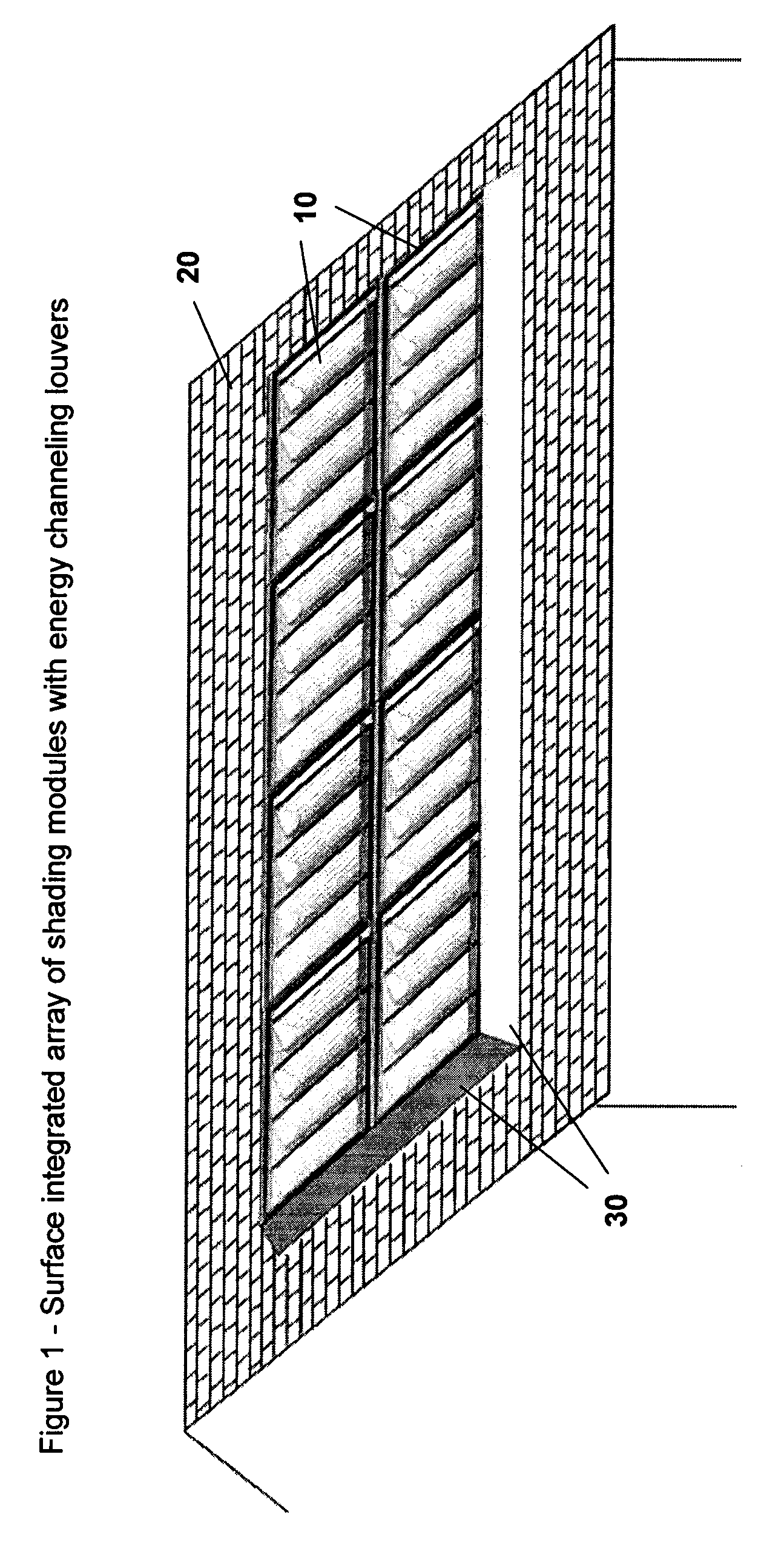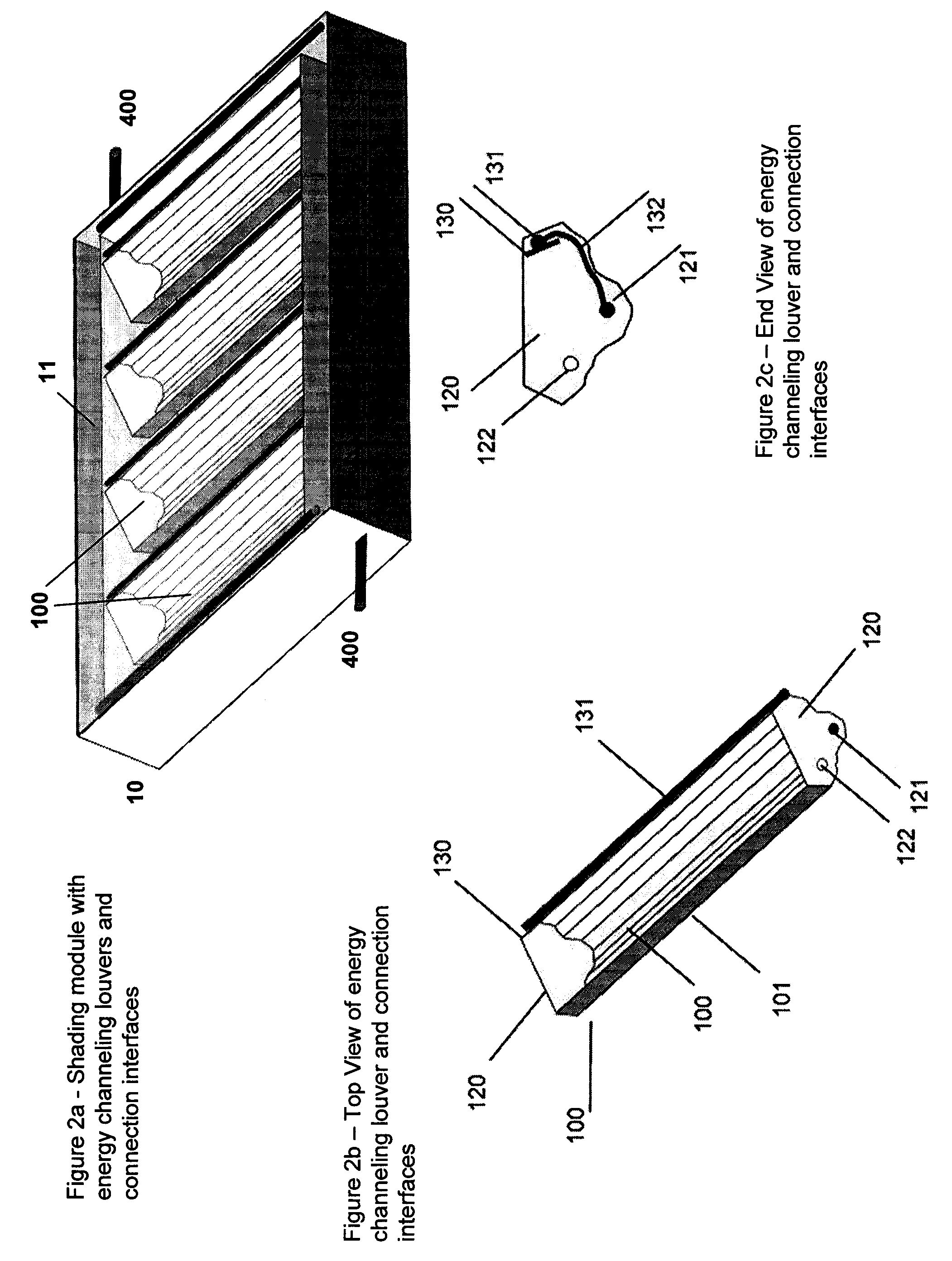Energy Channeling Sun Shade System and Apparatus
a technology of energy channeling sun shade and solar energy, applied in the direction of solar heat collectors for particular environments, solar radiation concentration, moving/orienting solar heat collectors, etc., can solve the problems of difficult management of solar glare, difficult to control climate control and lighting, and only useful for new construction passive solar design. , to achieve the effect of increasing the solar flux
- Summary
- Abstract
- Description
- Claims
- Application Information
AI Technical Summary
Benefits of technology
Problems solved by technology
Method used
Image
Examples
Embodiment Construction
[0035]FIG. 1 shows multiple modules 10 of a shading system affixed to a sloped roof 20. An optional flashing 30 is also shown for purposes of cladding and integrating with the roof plenum. The flashing is depicted as an angled housing attached to sides of the entire shading system.
[0036]FIG. 2a shows details of one type of module 10 that may be used in the shading system invention. The module is covered with a transparent or translucent glazing 11 that protects the contents of the module and provides a weather tight seal especially when the system is integrated with the roof plenum. In this embodiment, energy channeling louvers 100 intercept solar energy thereby shading the building from uncontrolled solar gain. The energy channeling louvers are connected in a header-riser arrangement to parallel tubing that carries an antifreeze solution via a manifold 400 that integrate with a building's hot water, heating, or cooling system when used with an absorption chiller that converts heat...
PUM
 Login to View More
Login to View More Abstract
Description
Claims
Application Information
 Login to View More
Login to View More - R&D
- Intellectual Property
- Life Sciences
- Materials
- Tech Scout
- Unparalleled Data Quality
- Higher Quality Content
- 60% Fewer Hallucinations
Browse by: Latest US Patents, China's latest patents, Technical Efficacy Thesaurus, Application Domain, Technology Topic, Popular Technical Reports.
© 2025 PatSnap. All rights reserved.Legal|Privacy policy|Modern Slavery Act Transparency Statement|Sitemap|About US| Contact US: help@patsnap.com



